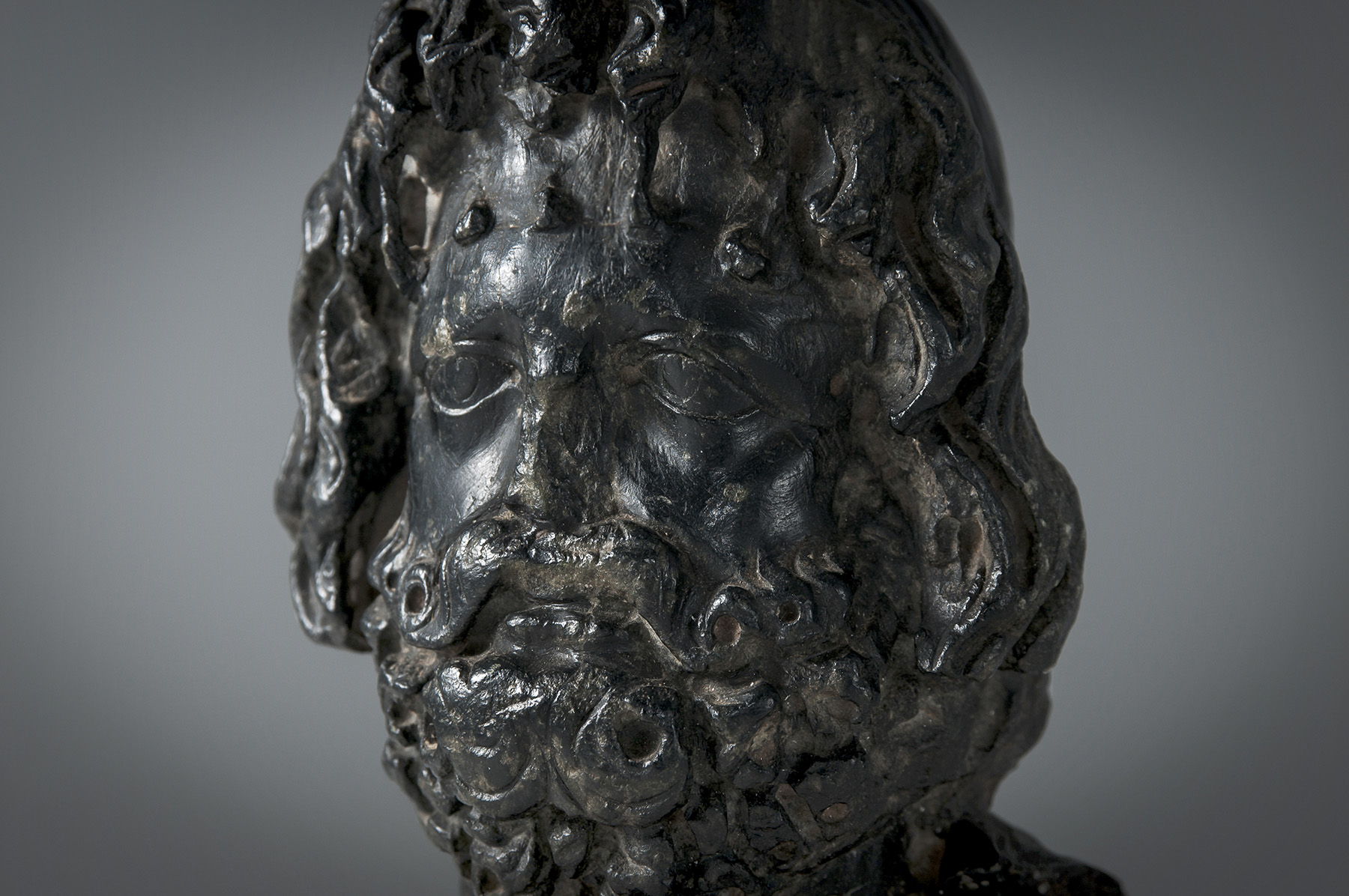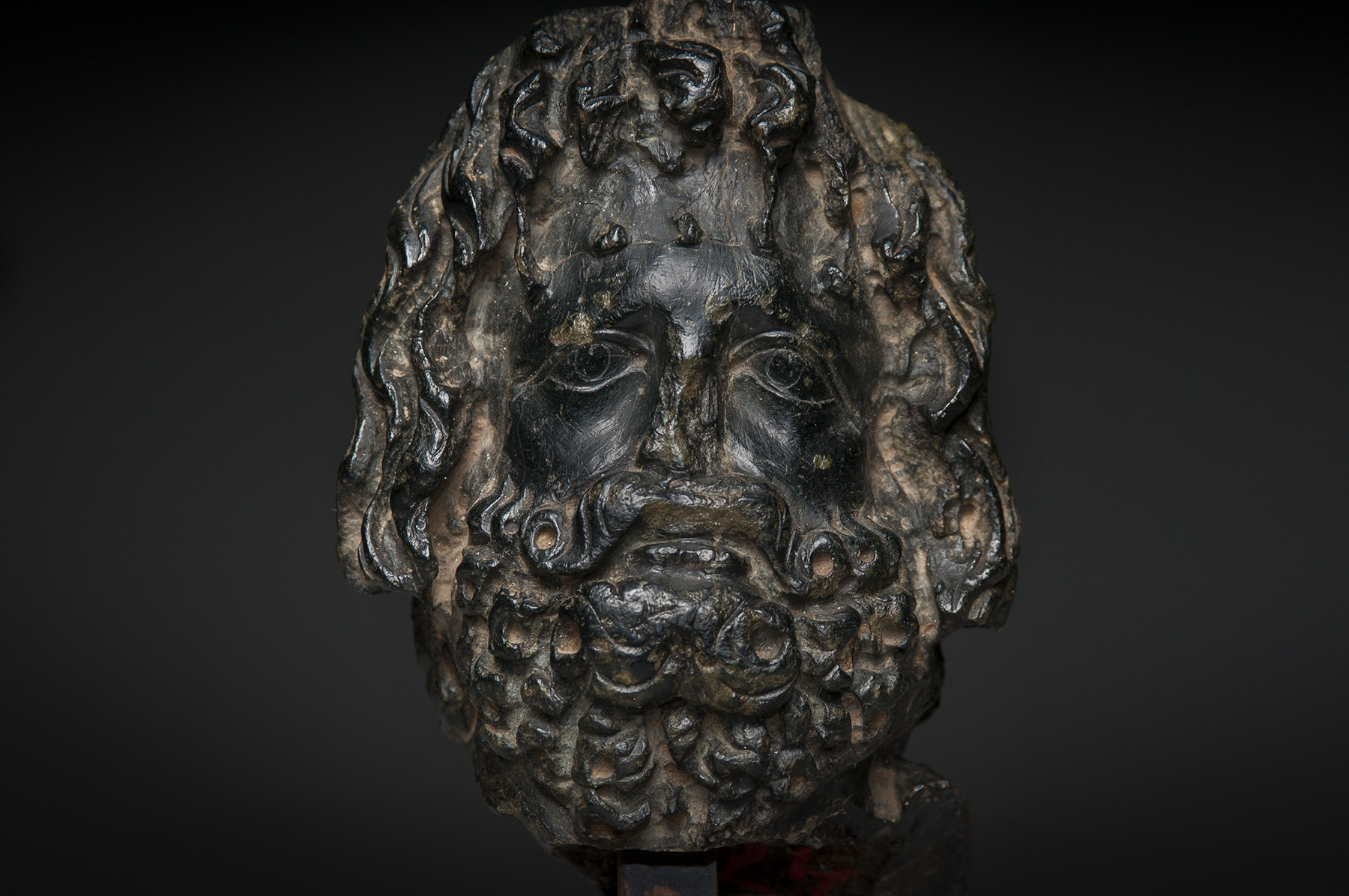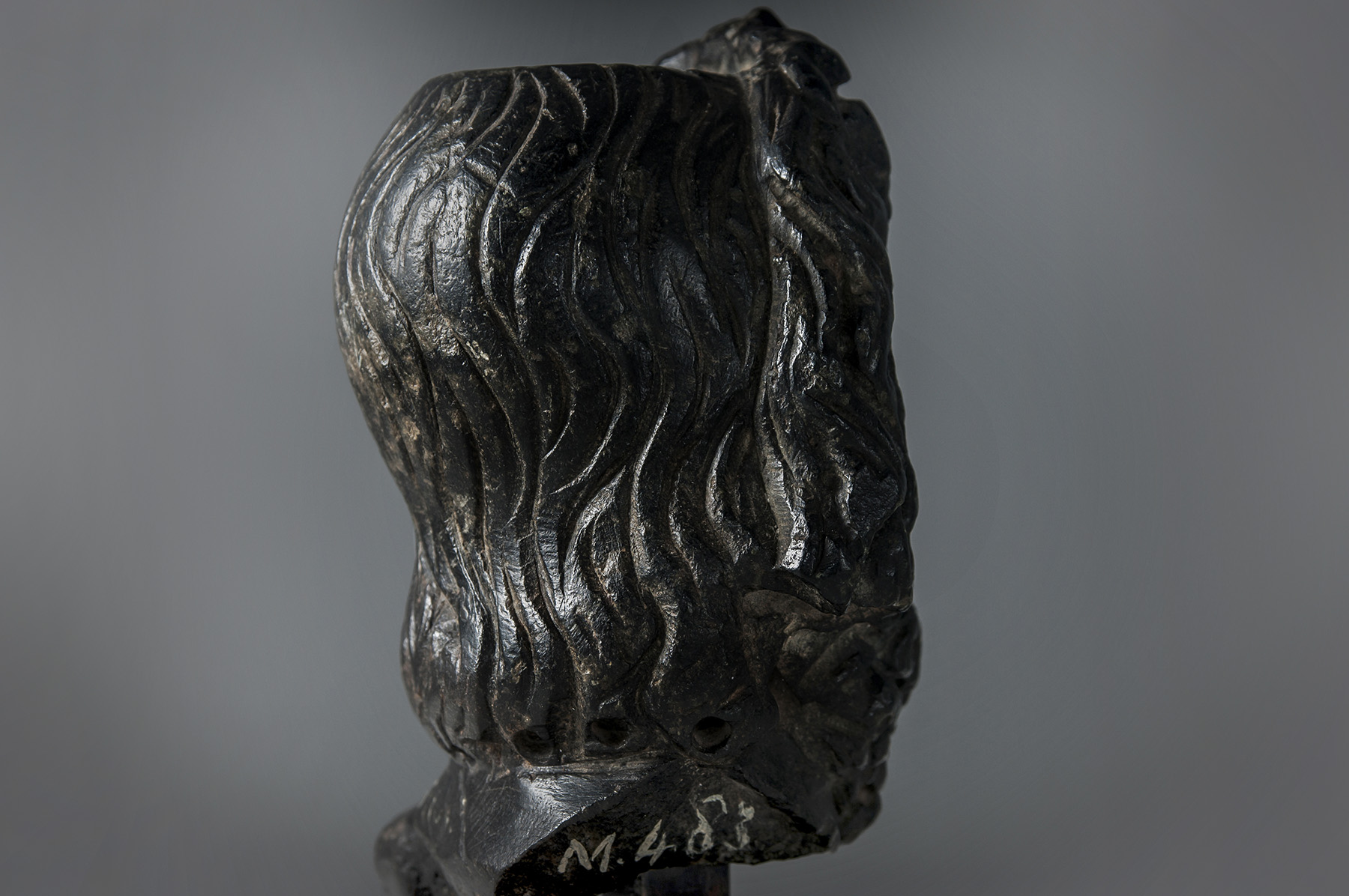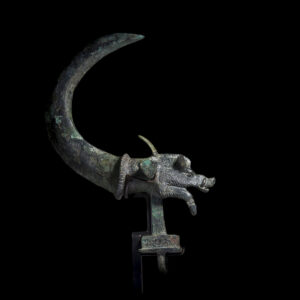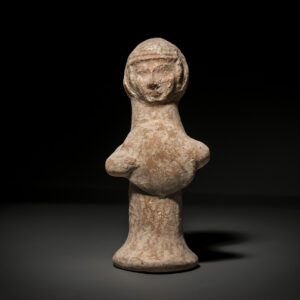Roman-Egyptian Schist Stone Head Bust of Greco-Egyptian god Zeus Serapis
This Roman-Egyptian head bust of the Greco-Egyptian god Zeus Serapis is finely sculpted from black schist stone, and dates from the Roman-Egyptian Period, 100 C.E. – 200 C.E. Representations of Serapis are uncommon. The most famous representation of the deity is that by Bryaxis, the famous sculptor who is credited with creating the sculptures on the north side of the tomb of Maussollos – one of the wonders of the ancient world. Other works of Bryaxis include a bronze statue of Seleucus, king of Syria, five huge statues at Rhodes, and a statue of Apollo at Daphne near Antioch.
The depiction of Serapis is uncommon, and this sculptor’s attention to detail is evident in all aspects of the piece: Wavy hair locks flow elegantly down the back and sides of Serapis’ head, as hair bangs drape across his forehead. His thick, full beard of curly hair locks covers his face in the classic style of ancient Greece which regarded the beard as a badge or sign of virility; Greek beards were also frequently curled with tongs.
Even though from the earliest times in ancient Greece the shaving of the upper lip was not uncommon, here Serapis is depicted with full handlebar mustache which curls upward on both sides of his face, revealing only his bottom lip. The superb craftsmanship of this piece is manifest down to the finest details in Serapis’ eyes which reveal the corneas that are clearly distinguishable from the sclera of each eye, and each is accentuated by delicate, finely-crafted eyelids as well as with expressive, arched eyebrows which are visible under the hair bangs.
Some of these hair locks that cover the forehead are missing, as well as part of the nose which were broken in antiquity. The cult of Serapis was banned in 391 C.E. and many of the sculptures destroyed. Therefore this fine specimen is an uncommon example that has survived the ravages of history, and thus is a very notable piece of rare ancient art.
The Cult of Serapis / Sarapis
The cult of Serapis was introduced during the 3rd century B.C.E. on the orders of Ptolemy I of Egypt as a means to unify the Greeks and Egyptians in his realm. Sarapis was a syncretistic deity derived from the worship of the Egyptian Osiris and Apis (Osiris + Apis = Oserapis/Sarapis).
Serapis also gained attributes from other deities, such as chthonic powers linked to the Greek Hades and Demeter, as well as benevolence linked to Dionysus. However, although he was identified with various Greek gods, Serapis was above all – because of his authority and his association with rulers (the Ptolemies in this case) – identified with Zeus.
Ptolemy I Soter (r. 305–284 B.C.E) commissioned the syncretistic god Serapis in order that the native population of Egypt – who already had an extensive pantheon of deities – and the occupying forces of Greece could have a common ritual focus, and he centered the worship of the deity at Alexandria. Serapis (or Sarapis) was a Greco-Egyptian deity of the Sun first encountered at Memphis where his cult was celebrated in association with that of the sacred Egyptian bull Apis (who was called Osorapis when deceased). The god therefore shared a group of attributes common to Greeks (physically robust, bearded male) and to Egyptians (attire and accessories). He was originally shown seated, with a sceptre of power, wearing a grain measure on his head, accompanied by a snake (identified with the Egyptian royal uraeus) and with a dog (originally held to be Anubis, later Cerberus) by his side.
Sources:
1.) Art Fund – Bust of Zeus Serapis by Greek
2.) Met Museum – Gold statuette of Zeus Serapis
3.) Britannica – Serapis
4.) Britannica – Apis
5.) Britannica – Ptolemy I Soter
6.) Wikipedia – Serapis or Sarapis
7.) Wikipedia – Beards in Ancient Greece
8.) Wikipedia – Bryaxis
9.) University of Chicago – The Temple of Serapis at Alexandria
10.) Book – “Zeus” by Ken Dowden





